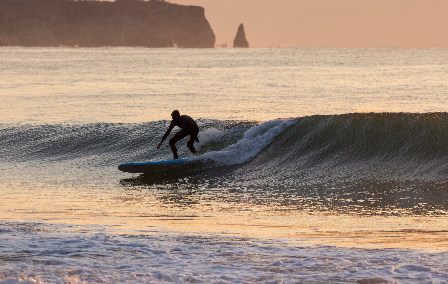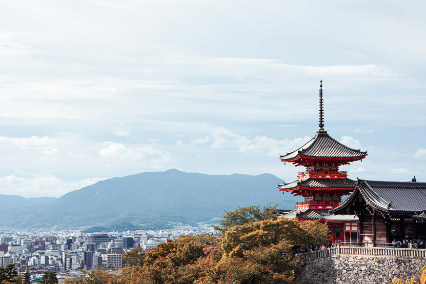
Published 24th Nov. 2025
Written by Joyce Chan
Reading time
On a recent research trip to Japan, our Asia specialist, Joyce, spent ten days exploring the lesser-trodden treasures of Tohoku, in northeast Honshu. She stayed in cosy mountain-framed ryokans, hiked along Iwate’s rugged coastline and admired Japan’s deepest lake – all without the crowds. From sipping smooth sake to sampling fresh uni, it was a trip for the books. Keen to know more? Read on for the most memorable moments from Joyce’s time in Japan...
I spent ten days exploring the Tohoku region in Japan. After touching down in Tokyo, I flew to Shonai, then travelled to the tranquil town of Tsuruoka, tucked beneath the Dewa Sanzan mountains. From there, I caught a train to Akita and drove to the Oga Peninsula. Next, I visited Kakunodate, followed by Nyuto Onsen for some serious relaxation, before continuing to and Hachinohe. Miyako and Jodogahama offered coastal views before I rounded off my trip in Sendai and Matsushima.

Image by Joyce Chan
I explored different cities and towns in Tohoku, one of Japan’s lesser-visited regions, wandering around museums, staying in charming ryokans and savouring delicious meals. From exploring Hirosaki Castle to hiking along the beautiful Iwate coastline, there was so much to see. I even visited Lake Tazawa, which is Japan’s deepest lake, reaching a depth of 423m.

Image by Joyce Chan
So much! One of the highlights was visiting Dewa Sanzan, or the ‘Three Mountains of Dewa’. Each mountain is connected by an ancient pilgrimage route and has a shrine near its peak. It was rainy and foggy the day I hiked, which only added to the mysterious atmosphere of the sacred mountains. I also loved doing a bit of self-driving during my trip; it was a great way to explore Japan’s countryside and reach its more remote corners.

Image by Joyce Chan
Yes! The Iwate coast felt like a secret spot. It was lovely to hike along Japan’s coastline and take in all the stunning scenery. If you’re visiting, you won’t want to miss the cute sightseeing train that runs in Akita; it’s called the Akita Nairiku Jukan Tetsudo and operates one line, travelling through rural inland areas and passing lovely mountain landscapes.

Image by Joyce Chan
Uni was amazing, it was so fresh and delicious! It’s sea urchin, and while it’s very pricey in the UK, it’s actually pretty common in Japan. And of course, I drank lots of sake as the region is famous for it.

Image by Joyce Chan
I learnt that there are mummies in Japan! There’s a type of Buddhist mummy called Sokushinbutsu, which refers to monks who achieved such deep meditation that they were believed to have transcended life and death. Back in the day, some monks dedicated themselves to this intense practice of self-mummification by taking poison and following strict diets to become a living Buddha.

Image by Joyce Chan
I had never eaten fugu, or pufferfish, before. It’s a Japanese delicacy that’s famously poisonous, but when prepared properly by a skilled and qualified chef, it’s edible. Luckily, I was in safe hands!

Image by Joyce Chan
Onsen and ryokan stays! Tohoku has lots of small and authentic towns, so is a great spot for both of these. I stayed at Tsurunoyu Onsen, one of the eight inns that make up Nyuto Onsen, nestled in the mountains in Akita. What’s special about Tsurunoyu is that it’s the oldest and most famous inn in the area, with over 300 years of history.

Image by Joyce Chan
What surprised me most was the contrast between the areas I visited. While the more rural areas felt authentic and quiet, the big cities were super modern and busy. Tourists were few and far between in Tohoku; some places felt very off-the-beaten path and the locals seemed genuinely amused to see me.

Image by Joyce Chan
Be prepared that most restaurants don’t have English menus, so it’s handy to have Google Translate or a similar app downloaded. The app’s picture mode is really helpful for translating menus into English!

Image by Joyce Chan
Header image by Joyce Chan

Whether you’re a family seeking Tokyo’s futuristic museums or a couple wishing to relax in Hokkaido’s onsens, we’ve got you covered. Our consultants have first-hand experience of living in Japan, so we know the secret spots off the beaten track (and how to reach them). Train travel is the best and most efficient way to explore the country, and wherever you visit, getting to grips with Japan’s diverse culture is a must. We work with guides who provide in-depth experiences on the history of Samurai or Geisha culture, and we have hand-picked traditional ryokan properties to rest your head in.
ENQUIRE NOWPractical advice and inspiration for your next trip

Surfing may not be as synonymous with Japan as sushi or sake, but there’s a thriving surf scene in the ‘Land of the Rising Sun’. The annual typhoon season (especially between August and October) brings powerful swells to Japan’s Pacific Coast, making this the optimal time to hit the waves. And with almost 18,500 miles of coastline to choose from, there’s no shortage of shores. Keen to narrow down the options?
12th August 2025 - Japan Beaches & Islands

Japan is world-renowned for its spectacular scenery – and it’s easy to see why. From shimmering lakes and cascading waterfalls to lush forests and majestic mountains, its natural beauty is truly something to behold. So, whether you’re looking to cycle through the lush pine trees at Amanohashidate or relax on the white-sand beaches of the Amaharashi Coast, we’ve got you covered. Read on to discover our shortlist of the most unmissable Japanese landscapes… Amanohashidate Sandbar,
28th July 2025 - Japan Travel Inspiration

On a recent research trip to Japan, our Asia specialist, Joyce, spent ten days exploring the lesser-trodden treasures of Tohoku, in northeast Honshu. She stayed in cosy mountain-framed ryokans, hiked along Iwate’s rugged coastline and admired Japan’s deepest lake – all without the crowds. From sipping smooth sake to sampling fresh uni, it was a trip for the books. Keen to know more? Read on for the most memorable moments from Joyce’s time in Japan.
24th November 2025 - Japan Travel Tips

Our team of destination experts will get to know you and your unique requirements for your holiday

We work with you to build an ultra-personalised holiday itinerary with your choice of accommodation, experiences and activities

All of our holidays include little extras designed to make a big difference to your trip, from fast-tracking you through airport check-in and security to our network of local Concierges